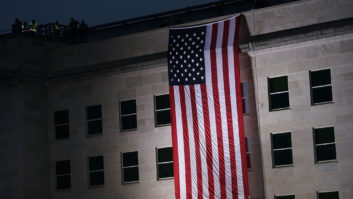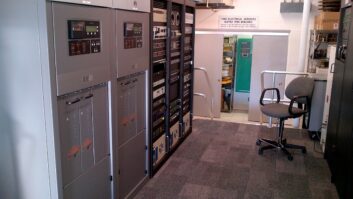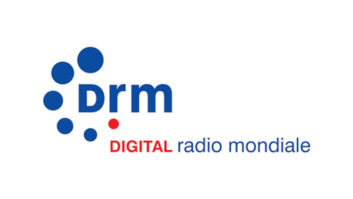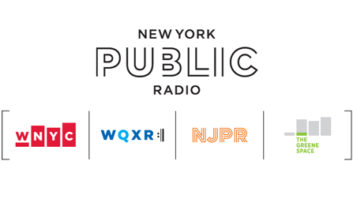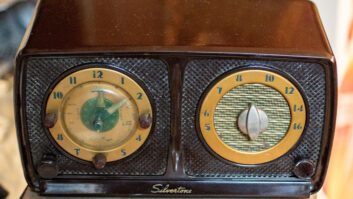This informative piece ran in Radio a year after the 9/11 collapse of the World Trade Center towers and the broadcast facility located there.

With tremendous height and clear coverage of Manhattan, the World Trade Center towers were home to four FM radio transmitters. On Sept. 11, 2001, WKCR, WKTU, WNYC and WPAT were not only faced with the difficulties inherent in covering news from a city under attack, but also they lost their transmission capabilities and equipment, just when they were most needed. Twelve months after the World Trade Center collapse, none of the stations have fully recovered.
Backup plans
The terrorist attacks have forced New York stations to re-examine their emergency plans. There is now more variety in the mix of New York City backup locations and fully redundant transmission systems. For the four World Trade Center FM stations, emergency plans no longer mean simply a low-power transmitter for equipment failures. Backup systems were not considered of high importance before September, but “now you’re criminally negligent if you don’t have backup systems in place,” said WPAT Chief Engineer Mike Toko.
When WNYC constructed its original transmission systems, the cost of a full-power backup system was considered excessive for its needs. “Who thought that the World Trade Center was going to collapse? That tells you anything can happen and you have to weigh the ‘what if’ scenarios against real world costs,” WNYC Chief Engineer Steve Shultis said. For some stations, the cost of an extended outage may weigh more than the initial outlay on a backup location. “You spend a million dollars to build a backup system but what’s the ROI? For us the site has more than paid for itself,” said Josh Hadden, Clear Channel’s New York director of engineering.
The full economic consequences of the damage from Sept. 11 may never be known, but New York broadcasters lost significant revenue while they were off the air, in addition to transmission equipment. Long-term solutions may be years in the making, but a review of station emergency preparedness plans should be something every station undertakes regularly.
The site at 4 Times Square was built as Clear Channel’s backup facility. It is now the main site for WKTU.

WKTU, 103.5 FM
Clear Channel’s WKTU was the first of the affected stations to return to the air. It also was the only one of the four stations with a backup system located elsewhere. The World Trade Center was the site of numerous television transmissions. Between 1999 and 2001, construction and testing of the DTV antenna system on the towers meant regular disruptions for radio broadcasters. To cope with the ongoing outages, Clear Channel built a backup transmission system in Times Square. “When the TV stations at the World Trade Center were upgrading their DTV projects, we used Times Square every night,” said Josh Hadden, director of engineering, Clear Channel New York. “That meant we were best positioned of all the FMs, of the stations on the World Trade Center, in that we already had a backup site in Manhattan.” Within minutes of the collapse, WKTU was able to switch to the backup site, covering 80% of ERP at 8 kW.
Within the week, WKTU requested and received an STA from the FCC for upgraded power from its backup site. The station now operates at 17 kW at Times Square. While WKTU plans to keep the Times Square site as a backup, it has filed an application with the FCC for a master antenna license at the Empire State Building. Hadden hopes to receive the license this year but spacing issues with a Class A station on Long Island could delay the approval. The FCC is requiring all the stations from the World Trade Center to follow normal application procedures.
Harris supplied the temporary transmitter that WKCR used from the roof of a campus dorm.

WKCR, 89.9 FM
Next to return to the air was Columbia University’s WKCR. When the towers collapsed, WKCR lost its primary and backup systems. Shortly after the disaster, Station Engineer Rich Koziol ordered an emergency package from Harris for WKCR and arranged similar orders for WPAT and WNYC. The 1 kW Quest transmitter was installed on the roof of a campus dorm by Sept. 13. Unfortunately, the station now reaches only 9 percent of its original audience.
For five years, WKCR had operated out of nearby Riverside Church. In September 2001, the station planned to move back to the Columbia University campus into a brand new digital studio. “We spent a half million dollars [on the studios] and had planned fund raising for Sept. 28 but with 9% power couldn’t do it, so now we owe the university,” said Koziol.
WKCR received insurance funding and a government grant to build a new transmitter site, but it is still trying to negotiate an alternative location for the station. “The best site right now is Empire, but everyone is trying to get there,” said Koziol, “there is no electrical, no room and the mast is full, so we chose not to do Empire, as we were such a small player.”
There is a mast on the tower of Riverside Church, where WKCR formerly had its studios. Originally used by WRVR, the church antenna was abandoned many years ago and Koziol is hopeful the FCC will grant temporary authority for WKCR to transmit from the site. “With 26 stations we could interfere with in the educational band, any move requires a major review of short spacing,” said Koziol. A study of the impact of the move to Riverside has been sent to the FCC and WKCR is waiting on the results. After FCC approvals are received, the station expects to be running from the church mast within 40 days.
The WPAT installation at Times Square is also used by sister station WSKQ.

WPAT 93.1 FM
Spanish-language broadcaster WPAT erected a 1 kW transmitter at the Empire State Building after losing its primary and backup equipment at the World Trade Center. “We were down for 59 hours and 48 minutes, not that I was counting,” said Chief Engineer Mike Toko. Though lower in height, and with less power at the Empire State Building, WPAT was still able to reach 75% of its audience.
Once emergency transmissions had been established at the Empire State Building, WPAT began constructing an alternate site in Times Square. “At Times Square we have 90% coverage, we’ve only been on a couple of months but it’s looking good and sounding good,” said Toko. During the next six months, the station plans to construct a full-power main site at the Empire State Building and use Times Square as a backup.
WNYC installed a full-power facility at Times Square.

WNYC 93.9 FM
The last of the four FMs to return to the air was WNYC. Immediately after the collapse of the World Trade Center, WNYC worked to maintain transmission on its AM facility in New Jersey. Once the AM signal was stabilized, WNYC began restoring its FM signal, placing a 1 kW signal at the Empire State Building. “Empire was a shock,” said Chief Engineer Steve Shultis. “With low power at Empire we got the whole east side back, which we had lost 15 years ago when we moved to the World Trade Center. We had so much shadow [from the World Trade Center site] that even the 1 kW [on the Empire State Building] was an improvement.”
WNYC spent the next six months building a full-power facility in Times Square. “Times Square was quicker for full power because the combiner system was plug and play, it just took a couple overnights to install,” Shultis said. Now in the process of building a full-power facility at the Empire State Building, the station soon expects to have a full-power main facility at the Empire State Building and a full-power backup at Times Square. Shultis said, “My goal is 9/11 this year, as that would be a fitting ending to that calendar cycle.”
Stephanie Snyder is an independent streaming media consultant.
Timeline
Sept. 11, 2001
- WKCR, WPAT, WNYC and WKTU lose transmitters and backup systems on World Trade Center;
- WKTU returns to air from backup transmitter in Times Square;
- Harris ships three transmitters and ERI ships three antennas to WKCR, WPAT and WNYC;
- WNYC(FM) simulcasts on AM transmitter in New Jersey and on WNYE(FM).
Sept. 13, 2001
- Transmitters arrive from Harris.
- WKCR returns to air using 1 kW antenna on roof of dorm at Columbia University.
Sept. 14, 2001
- WPAT returns to air with 1 kW antenna on Empire State Building.
Sept. 16, 2001
- WNYC returns to air on 1 kW antenna on Empire State Building.

